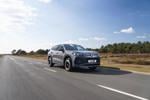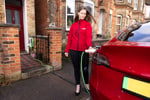The Environment Agency made the calculations to assess the green impact of its own fleet, and found that the only lower-and upper medium vehicles which fall into its cleanest top 20 are cars that run on compressed natural gas (CNG) and liquefied petroleum gas (LPG).
Don Ridley, the agency's environmental planning manager, created the list based on a formula which calculates a vehicle's impact on global warming and air quality, using figures from the Vehicle Certification Agency and scientific reports.
Ratings are calculated both for the vehicle and for the fuel from 'well to wheel', determining the impact the process of producing and refining the fuel. For example, electric vehicles have zero emissions at the point of use, but generating the electricity to charge the batteries is normally done using fossil fuels at power stations. In the Environment Agency list the Honda Insight takes first place, followed by the LPG Vauxhall Astravan, and the compressed natural gas (CNG) powered Volvo S80 and V70.
The highest placed petrol cars are small city cars like the MCC Smart, Daihatsu Cuore and Suzuki Swift 1.0-litre.
Ridley said the Agency assessed the polluting impact of vehicles based on where the vehicles will be driven: 'Our message is that we look at the environmental impact of vehicles on a local basis, and rather than choosing a particular vehicle, we ask what type of role the vehicle is going to have and what work it will do.'
For example, if a vehicle is used only in urban areas, it will award a heavier weighting to the local impact of the vehicle's emissions rather than the production of its fuel source. But if a vehicle is used in rural areas, both aspects are given an equal balance. And if the vehicle is used in a combination of rural and urban areas then the weighting is biased towards the vehicle.












Login to comment
Comments
No comments have been made yet.